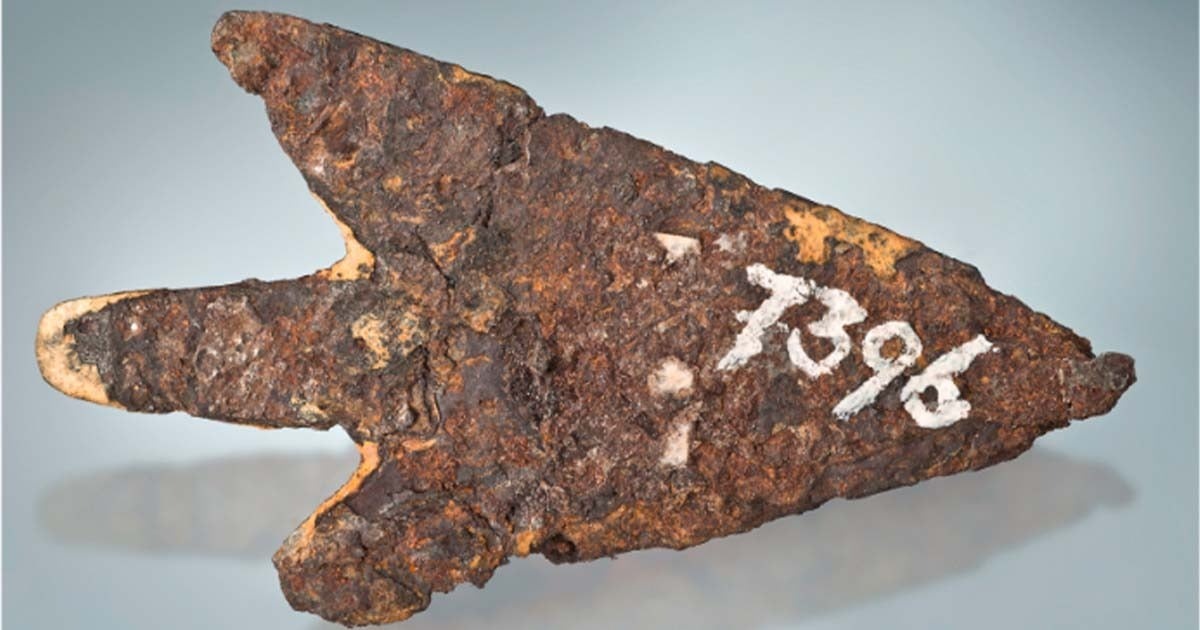Meteorites have been falling to Earth for over 4 billion years. Some of them even contain valuable metals, such as titanium or iron. Our ancestors from the Bronze Age and the Iron Age could use metal meteorites to create tools or weapons. A new study has shown that an ancient Bronze Age arrowhead has a meteoritic origin. The discovery reveals the value of “heavenly rocks” in Iron Age society.

Meteoritic material
Archaeologists have discovered dozens of man-made tools made from meteorites. A significant part of such finds belong to the Middle East and Asia. In Europe, until recently, only two places in Poland were known where objects of meteoritic origin were found. A third location has recently appeared. An arrowhead found in a dwelling near Lake Mörigen in Switzerland at the end of the XIX century also turned out to be made of a meteorite. According to research, it belonged to the Bronze Age, approximately between 900 and 800 BC. Some key features make this find particularly interesting for archaeologists.
Swiss researchers determined that the arrowhead belongs to meteorites using the modern method of non-destructive testing (NDT). Usually, when an archaeologist wants to determine whether a certain object has a meteoritic nature, he conducts destructive tests of samples. The Swiss team took a more cautious approach, using a variety of non-destructive methods — from muon-induced X-ray emission spectroscopy to highly sensitive gamma-ray spectroscopy.
Unexpected origin
After examining numerous samples of archaeological sites, it turned out that only one of them had a meteoritic origin. This was all the more unexpected because the meteorite was not local. At first, scientists assumed that the sample comes from the famous Twannberg meteorite explosion that once occurred on the territory of Switzerland.
When the Twannberg meteorite fell, it broke into fragments, of which, at the moment, it was possible to find more than 2,000 individual fragments with a total mass of more than 150 kg. All this happened a few kilometers from Lake Mörigen, where the arrowhead was found. However, the study shows that this particular arrowhead is definitely not related to the Twannberg meteorite. Scientists suggest that it was made from parts of another meteorite that fell on the territory of Estonia around 1500 BC, known as Kaalijarv. It has a chemical signature similar to three other meteorites. The place of its fall was located at a distance of more than 1600 km. Such a range may seem long, but in fact the arrowhead could overcome it in the Bronze Age.
Unsolved mystery
Of course, there are other options. Perhaps, somewhere closer to Switzerland, another meteorite with a similar composition was found. Or two other meteorites that fell in Europe — one in the Czech Republic and the other in Spain — became the source for these finds. Nevertheless, it remains a strange fact that the arrowhead, for the most part not made from a meteorite that landed near it, had a greater mass than a hunter could use for his arrows in his entire life.
Unfortunately, most likely, the mystery will remain unsolved, which makes this arrowhead especially interesting. However, modern technologies used by researchers open the way for the use of similar methods in the future to search for meteorite artifacts.
Earlier we reported on how scientists solved the mysterious property of meteorites.
According to Universe Today
Follow us on Twitter to get the most interesting space news in time
https://twitter.com/ust_magazine
